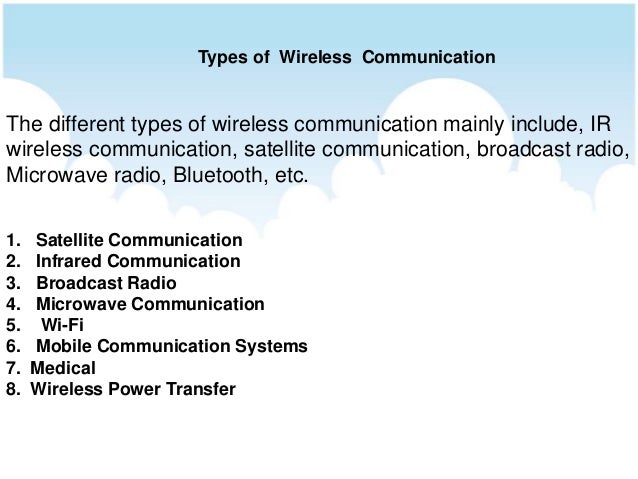Wired Network
As we know "wired" is the term refers to any physical medium consisting of cables. The cables can be copper wire, twisted pair or fiber optic. Wired network is used to carry different forms of electrical signals from one end to the other. Mostly in wired network one internet connection is being taken using T1 line, cable modem or using any other means. This connection is shared among multiple devices using wired network concept.
Wireless Network
As we know "Wireless" is the term refers to medium made of electromagnetic waves (i.e. EM Waves) or infrared waves. All the wireless devices will have antenna or sensors. Typical wireless devices include cellular mobile, wireless sensors, TV remote, satellite disc receiver, laptops with WLAN card etc. Wireless network does not use wires for data or voice communication; it uses radio frequency waves as mentioned above. The other examples are fiber optic communication link and broadband ADSL etc.
Advantages of a Wireless Network over Wired
As I mentioned in the introduction, the main advantage of a wireless network over a wired one is that users can move around freely within the area of the network with their laptops, handheld devices etc and get an internet connection.
Users are also able to share files and other resources with other devices that are connected to the network without having to be cabled to a port.
Not having to lay lots of cables and put them through walls etc. can be a considerable advantage in terms of time and expense. It also makes it easier to add extra devices to the network, as no new cabling is needed.
If you are a business such as a café, having a wireless network that is accessible to customers can bring you extra business. Customers generally love wireless networks because they are convenient.
Wireless networks can sometimes handle a larger amount of users because they are not limited by a specific number of connection ports.
Instant transfer of information to social media is made much easier. For instance, taking a photograph and uploading it to Facebook can generally be done much quicker with wireless technology.
Disadvantages of a Wireless Network
It can require extra costs and equipment to set up, although increasingly routers have built-in wireless capability, as do devices such as laptops, handheld devices, modern DVD players, and TVs.
Setting up a wireless network can sometimes be difficult for people who are not experienced with computers. (Although there are issues with setting up a wired network too, off course!)
File-sharing transfer speeds are normally slower with wireless networks than they are with cabled. The speeds can also vary considerably according to your location in relation to the network.
The general speed of a wireless connection is also usually much slower than a wired one. The connection also gets worse the farther you are from the router, which can be a problem in a large building or space.
Wireless connections can be obstructed by everyday household items and structures such as walls, ceilings, and furniture.
Wireless networks are generally less secure. There can also be problems with neighbors stealing bandwidth, if the network hasn’t been set up to be password protected. Information is also less secure too and can be easier to hack into.

